Global suppliers are focusing on their billionaire brands and reaping the rewards in spite of the economy, says Noli Dinkovski
There’s not much you can do with olive oil. At least that was the rationale behind Unilever’s decision to offload its Bertolli olive oil business to Grupo SOS in a £500m sale last month.
Bertolli is one of the world’s leading olive oil brands, yet Unilever says there is little scope for innovation and development around the range – unlike the brand’s sauces, spreads and frozen meals, which the supplier intends to keep.
But Unilever isn’t alone in brand focusing. This year’s OC&C Global Giants Index, compiled exclusively for The Grocer, shows a number of the top 50 global fmcg suppliers are embracing the strategy.
Brand focusing is one of the central reasons why the top 50 global companies have posted their best collective set of results since the study was first conducted in 2001, says OC&C – no mean feat given the economic climate. Profit margins for 2007 were 18.2%, up 1.2% on the previous year. Meanwhile, sales grew by 9.5% and market share has reached a record high in both mature and developing markets.
Figures for Nestlé, the world’s biggest fmcg supplier, show that 19 of its 31 billionaire brands (in CHF) grew organically by at least 8%, and 15 by at least 10% – both figures substantially above its average organic growth of 7.4%. Similarly, P&G’s 23 billionaire brands (in US$) were up by 7%, in comparison with the company’s 5% average.
So why is brand focusing proving so successful for the global suppliers?
The benefits come in a number of areas, says OC&C Strategy Consultants associate partner Nicholas Farhi. “Essentially, the supplier can get to understand one category really well and that ultimately helps it understand the consumer better. And fewer brands mean marketing investment is more concentrated, which is another consumer-facing benefit.”
No company typifies this strategic shift more than Cadbury. In 2005, Cadbury decided to sell its European soft drinks business to private equity investors to focus on its faster-growing confectionery and other beverage businesses. This year it went a step further, hiving off the beverages business.
Brand focusing helps suppliers identify a more unified set of goals, says Farhi. “This benefit is massively underestimated,” he says. “All organisations think they have infinite bandwidth and can do more and more things. But it becomes very difficult to cope with so many different units.”
Explaining to suppliers that the cost of brand complexity is huge is no easy task, adds OC&C chairman emeritus Chris Outram. “No matter how smart a chief executive may be, if they don’t know the names of all their brands it can only be a detriment to their business,” he says. “A chief role at the centre of any organisation is to provide support functions to individual business units, such as HR, finance, IT and marketing,” he adds. “If there are hundreds of units to support, the chief executive will spend most of his or her time on operational issues and neglect what really matters – the brands and customers.”
When Patrick Cescau became the sole Unilever CEO in 2005 he set about reorganising the business by taking out layers and bringing the leadership closer to the coal-face. “Cescau moved brand development out of the countries and made them true go-to-market operations,” a Unilever spokesperson says. “We are now a more flexible and responsive business, better able to deal with uncertain economic conditions.”
The benefits of focus take their time to filter through to a company balance sheet, says Farhi. “P&G is really focused – it has been doing it longer than anyone else and with a profit margin of 21% is seeing the rewards now. Unilever, on the other hand, came into this game late. But to be fair, it had a far more fragmented portfolio to start with so had farther to go.”
With so much focusing going on, is there a danger that suppliers can go too far and rely on too few brands? “It’s an interesting debate that we’re also having with a supplier at the moment,” says Outram. “It says it has diversified into a number of areas because it wants to manage risk.”
The problem, he adds, is that market share is highly correlated with profit. “If you’re smaller than the next competitor, you tend to make less money, and it’s impossible for suppliers to be brand leaders in a massive number of markets,” he says. “We think the argument that you should diversify to reduce risk is a weak one.”
There is also a view that brand-focusing can compromise innovation. However, Farhi believes that, within a brand at least, innovation can actually increase. He cites PepsiCo and Coca-Cola as two good examples of suppliers leading innovation through their core brands.
And while focusing has its limits, if there is a rapidly growing market that begs to be exploited, suppliers can make strategic aquisitions. “P&G’s action in that situation would be to buy an up-and-coming company in that sector and build on that brand,” says Farhi. “Its attitude is not to be constrained by the capabilities of its own organisation.”
P&G encourages a “gratefully invented elsewhere” approach to innovation, said P&G director of corporate R&D Joachim von Heimburg last year. He added that the company had set itself a goal of generating half of its innovation-led growth in this way.
“P&G decided it was spending too much on R&D and innovation and not getting enough from it,” says Outram. “So it decided to halve the budget and look out for early-stage innovation elsewhere.”
Increased M&A activity among the top 50 suppliers in 2007 was another indication of the greater emphasis on brand focusing. With transactions totalling $136bn, including three mega-deals, it was two-and-a-half times the value of the previous year. Furthermore, 93% of the top 50 stated that “acquisitions to consolidate core businesses” were a priority, up from 76% in 2006.
“There’s clear evidence that acquisitions are being made as a way to consolidate rather than diversify,” says Farhi.
The rationale behind the two biggest deals of 2007 –Imperial Tobacco’s $20.8bn takeover of Gauloises cigarette maker Altadis and Danone’s $16.1bn acquisition of babyfood magnate Royal Numico – were both to strengthen existing market positions. “M&A activity has increased over the seven years of the study, and has been led by this focus on core positions,” Farhi adds.
M&A activity has also played its part in a second reason OC&C says the top 50 global suppliers did so well – good practice in emerging markets. Last year, acquisitions to penetrate and strengthen new geographies totalled $22.3bn – far exceeding any of the previous six years.
However, the OC&C study suggests companies in the top 50 are picking up on consumer trends far quicker than in the past. “The global suppliers have definitely changed the way they approach innovation around new trends,” says Outram. “Frankly they have had to, because there have been several well-reported consumer trends lately, such as healthy, ethical and premium, which have not been led by these global giants, but by consumers themselves.”
Consumer trends around ethical and healthy are now becoming part of the core ranges of many of the global suppliers. Perhaps the most well-known is Tate & Lyle’s plan to switch its entire retail cane sugar business to Fairtrade. But there are others – tea brand giants Lipton and PG Tips both carry the Rainforest Alliance logo, while Walkers now cooks its core crisp ranges in the healthier alternative of Sunseed oil.
Likewise, the top 50 have been increasingly successful in tapping into the demand for premium products. “Many have been home-grown brands rather than acquired ones,” says Farhi. “Nestlé’s Nespresso premium coffee is a case in point, with sales now totalling more than €1bn.” The study also shows that the global giants have started to customise their products to local preferences better. Danone’s Wahaha, made specifically to appeal to Chinese tastes, is the leading brand for water, ready made tea and fruit juices in the country. Similarly, Cadbury established its Chocki drink in India to great success, and is now exporting it to other countries.
The top 50 have managed to adjust their supply chains to the small, fragmented distribution bases that are often found in emerging markets, says OC&C.
Nestlé, for example, has achieved a 45% penetration in rural areas of central and West Africa with its Maggi bouillon seasoning cubes, thanks to distribution in neighbourhood stores, street markets and mobile vending carts.
And when it comes to establishing brands in emerging markets, suppliers have not been afraid to make price cuts. In India, P&G has changed its positioning on brands such as Tide, Whisper and Pantene from premium to mid-market in a bid to drive sales.
Of course, pricing issues are highly topical in all markets right now. Commodity inflation ran at 12.6% for the year, according to the study. Suppliers, however, have successfully managed to pass on these costs. While they witnessed barely any gross profit margin change (down 0.1%), and retailers’ margins actually went up by 0.4%, the consumer price index for food in the OECD countries was up by 5.5%. “Consumers have been footing the bill for inflation,” says Farhi. “That’s been another reason why the top 50 have done so well.”
So, it’s been a success story for the leading global suppliers, but the study issues a stark warning – next year’s outcome is not likely to make such good reading. “It’s downhill from here,” says Farhi. “Price increases are becoming more difficult to pass on, because consumers are less able to absorb them.”
The growth in share of the higher-priced, higher-margin premium and ethical segments will slow, impacting on sales growth and further hitting margins, OC&C predicts. To combat this, Farhi says, the top 50 will have to continue to strengthen their growth with the discounters.
“Some will try to introduce value-for-money brand variants, while others will try to start supplying the hard discount channel with existing brands,” says Farhi. “Either way, both areas will grow.”
There is also the potential of more suppliers creating own-label products for retailers. “As manufacturing capacity falls, it may be sensible for suppliers to use that extra production capability to serve retailers, though there are long term cost-consequences so it has to be managed carefully,” says Farhi. “The top 50 are largely branded players at the moment, but that may change.
One thing is clear: despite the downturn, suppliers will continue to grow in emerging markets and reap the benefits of focus. “Over the next year, category leaders will remain with a competitive advantage,” says Farhi. “That’s a trend with several more years to run.”
There’s not much you can do with olive oil. At least that was the rationale behind Unilever’s decision to offload its Bertolli olive oil business to Grupo SOS in a £500m sale last month.
Bertolli is one of the world’s leading olive oil brands, yet Unilever says there is little scope for innovation and development around the range – unlike the brand’s sauces, spreads and frozen meals, which the supplier intends to keep.
THE BIG THREE: BRAND FOCUS STRATEGY
Nestlé
Billionaire brands (CHF) 31
Leading brands: Nestlé, Nescafé, Nespresso, Vittel, Maggi
Percentage of food and beverage sales: 70%
Nineteen of Nestlé’s 31 billionaire brands grew organically by at least 8%, and 15 by at least 10% in 2007. Both figures were substantially above its average organic growth of 7.4%. Nestlé managed to strengthen its leadership in the Russian chocolate market by acquiring the Ruzskaya Confectionery Factory. It also acquired Gerber, the iconic US babyfood brand, giving it the number one position in the world’s biggest babyfood market.
P&G
Billionaire brands ($) 23 Leading brands: Lenor, Duracell, Gillette, Pampers, Pantene Percentage of sales 66%
An expert at brand focusing, P&G now has 23 billionaire brands, representing about two thirds of annual sales and a greater percentage of profit. An additional one sixth of sales is generated by the next 18 brands, with more than $500m sales. The billionaire brands realised an organic volume growth of 7% in 2007, 2% more than the P&G average of 5%. P&G’s profit margin for the year was a healthy 21%, and its grocery sales grew by 12.4%.
Unilever
Billionaire brands (€) 12 Leading brands: Knorr, Lipton, Dove, Lux, Hellmann’s
Percentage of sales: 60%+
Unilever now has 12 billionaire brands and its top 25 brands account for 75% of sales. The global giant has reduced its number of brand names from 1,600 to 400 in just eight years. Unilever says those remaining 400 brand names actually only represent about 200 products because many brands have different names in different parts of the world. The supplier says it has “no target figure” for the number of brands it wishes to have in its porfolio.
In the past eight years Unilever has reduced its portfolio of brand names from 1,600 to 400. Divesting itself of the olive oil interest was just another step in an ongoing journey to refocus on its core business. It’s a strategy that means Unilever’s 12 leading ‘billionaire brands’, which include the likes of Knorr, Surf, Dove and Hellmann’s, now account for more than 60% of its turnover.Nestlé
Billionaire brands (CHF) 31
Leading brands: Nestlé, Nescafé, Nespresso, Vittel, Maggi
Percentage of food and beverage sales: 70%
Nineteen of Nestlé’s 31 billionaire brands grew organically by at least 8%, and 15 by at least 10% in 2007. Both figures were substantially above its average organic growth of 7.4%. Nestlé managed to strengthen its leadership in the Russian chocolate market by acquiring the Ruzskaya Confectionery Factory. It also acquired Gerber, the iconic US babyfood brand, giving it the number one position in the world’s biggest babyfood market.
P&G
Billionaire brands ($) 23 Leading brands: Lenor, Duracell, Gillette, Pampers, Pantene Percentage of sales 66%
An expert at brand focusing, P&G now has 23 billionaire brands, representing about two thirds of annual sales and a greater percentage of profit. An additional one sixth of sales is generated by the next 18 brands, with more than $500m sales. The billionaire brands realised an organic volume growth of 7% in 2007, 2% more than the P&G average of 5%. P&G’s profit margin for the year was a healthy 21%, and its grocery sales grew by 12.4%.
Unilever
Billionaire brands (€) 12 Leading brands: Knorr, Lipton, Dove, Lux, Hellmann’s
Percentage of sales: 60%+
Unilever now has 12 billionaire brands and its top 25 brands account for 75% of sales. The global giant has reduced its number of brand names from 1,600 to 400 in just eight years. Unilever says those remaining 400 brand names actually only represent about 200 products because many brands have different names in different parts of the world. The supplier says it has “no target figure” for the number of brands it wishes to have in its porfolio.
But Unilever isn’t alone in brand focusing. This year’s OC&C Global Giants Index, compiled exclusively for The Grocer, shows a number of the top 50 global fmcg suppliers are embracing the strategy.
Brand focusing is one of the central reasons why the top 50 global companies have posted their best collective set of results since the study was first conducted in 2001, says OC&C – no mean feat given the economic climate. Profit margins for 2007 were 18.2%, up 1.2% on the previous year. Meanwhile, sales grew by 9.5% and market share has reached a record high in both mature and developing markets.
Figures for Nestlé, the world’s biggest fmcg supplier, show that 19 of its 31 billionaire brands (in CHF) grew organically by at least 8%, and 15 by at least 10% – both figures substantially above its average organic growth of 7.4%. Similarly, P&G’s 23 billionaire brands (in US$) were up by 7%, in comparison with the company’s 5% average.
So why is brand focusing proving so successful for the global suppliers?
The benefits come in a number of areas, says OC&C Strategy Consultants associate partner Nicholas Farhi. “Essentially, the supplier can get to understand one category really well and that ultimately helps it understand the consumer better. And fewer brands mean marketing investment is more concentrated, which is another consumer-facing benefit.”
No company typifies this strategic shift more than Cadbury. In 2005, Cadbury decided to sell its European soft drinks business to private equity investors to focus on its faster-growing confectionery and other beverage businesses. This year it went a step further, hiving off the beverages business.
Brand focusing helps suppliers identify a more unified set of goals, says Farhi. “This benefit is massively underestimated,” he says. “All organisations think they have infinite bandwidth and can do more and more things. But it becomes very difficult to cope with so many different units.”
Explaining to suppliers that the cost of brand complexity is huge is no easy task, adds OC&C chairman emeritus Chris Outram. “No matter how smart a chief executive may be, if they don’t know the names of all their brands it can only be a detriment to their business,” he says. “A chief role at the centre of any organisation is to provide support functions to individual business units, such as HR, finance, IT and marketing,” he adds. “If there are hundreds of units to support, the chief executive will spend most of his or her time on operational issues and neglect what really matters – the brands and customers.”
When Patrick Cescau became the sole Unilever CEO in 2005 he set about reorganising the business by taking out layers and bringing the leadership closer to the coal-face. “Cescau moved brand development out of the countries and made them true go-to-market operations,” a Unilever spokesperson says. “We are now a more flexible and responsive business, better able to deal with uncertain economic conditions.”
The benefits of focus take their time to filter through to a company balance sheet, says Farhi. “P&G is really focused – it has been doing it longer than anyone else and with a profit margin of 21% is seeing the rewards now. Unilever, on the other hand, came into this game late. But to be fair, it had a far more fragmented portfolio to start with so had farther to go.”
With so much focusing going on, is there a danger that suppliers can go too far and rely on too few brands? “It’s an interesting debate that we’re also having with a supplier at the moment,” says Outram. “It says it has diversified into a number of areas because it wants to manage risk.”
The problem, he adds, is that market share is highly correlated with profit. “If you’re smaller than the next competitor, you tend to make less money, and it’s impossible for suppliers to be brand leaders in a massive number of markets,” he says. “We think the argument that you should diversify to reduce risk is a weak one.”
There is also a view that brand-focusing can compromise innovation. However, Farhi believes that, within a brand at least, innovation can actually increase. He cites PepsiCo and Coca-Cola as two good examples of suppliers leading innovation through their core brands.
And while focusing has its limits, if there is a rapidly growing market that begs to be exploited, suppliers can make strategic aquisitions. “P&G’s action in that situation would be to buy an up-and-coming company in that sector and build on that brand,” says Farhi. “Its attitude is not to be constrained by the capabilities of its own organisation.”
P&G encourages a “gratefully invented elsewhere” approach to innovation, said P&G director of corporate R&D Joachim von Heimburg last year. He added that the company had set itself a goal of generating half of its innovation-led growth in this way.
“P&G decided it was spending too much on R&D and innovation and not getting enough from it,” says Outram. “So it decided to halve the budget and look out for early-stage innovation elsewhere.”
Increased M&A activity among the top 50 suppliers in 2007 was another indication of the greater emphasis on brand focusing. With transactions totalling $136bn, including three mega-deals, it was two-and-a-half times the value of the previous year. Furthermore, 93% of the top 50 stated that “acquisitions to consolidate core businesses” were a priority, up from 76% in 2006.
“There’s clear evidence that acquisitions are being made as a way to consolidate rather than diversify,” says Farhi.
The rationale behind the two biggest deals of 2007 –Imperial Tobacco’s $20.8bn takeover of Gauloises cigarette maker Altadis and Danone’s $16.1bn acquisition of babyfood magnate Royal Numico – were both to strengthen existing market positions. “M&A activity has increased over the seven years of the study, and has been led by this focus on core positions,” Farhi adds.
M&A activity has also played its part in a second reason OC&C says the top 50 global suppliers did so well – good practice in emerging markets. Last year, acquisitions to penetrate and strengthen new geographies totalled $22.3bn – far exceeding any of the previous six years.
However, the OC&C study suggests companies in the top 50 are picking up on consumer trends far quicker than in the past. “The global suppliers have definitely changed the way they approach innovation around new trends,” says Outram. “Frankly they have had to, because there have been several well-reported consumer trends lately, such as healthy, ethical and premium, which have not been led by these global giants, but by consumers themselves.”
Consumer trends around ethical and healthy are now becoming part of the core ranges of many of the global suppliers. Perhaps the most well-known is Tate & Lyle’s plan to switch its entire retail cane sugar business to Fairtrade. But there are others – tea brand giants Lipton and PG Tips both carry the Rainforest Alliance logo, while Walkers now cooks its core crisp ranges in the healthier alternative of Sunseed oil.
Likewise, the top 50 have been increasingly successful in tapping into the demand for premium products. “Many have been home-grown brands rather than acquired ones,” says Farhi. “Nestlé’s Nespresso premium coffee is a case in point, with sales now totalling more than €1bn.” The study also shows that the global giants have started to customise their products to local preferences better. Danone’s Wahaha, made specifically to appeal to Chinese tastes, is the leading brand for water, ready made tea and fruit juices in the country. Similarly, Cadbury established its Chocki drink in India to great success, and is now exporting it to other countries.
The top 50 have managed to adjust their supply chains to the small, fragmented distribution bases that are often found in emerging markets, says OC&C.
Nestlé, for example, has achieved a 45% penetration in rural areas of central and West Africa with its Maggi bouillon seasoning cubes, thanks to distribution in neighbourhood stores, street markets and mobile vending carts.
And when it comes to establishing brands in emerging markets, suppliers have not been afraid to make price cuts. In India, P&G has changed its positioning on brands such as Tide, Whisper and Pantene from premium to mid-market in a bid to drive sales.
Of course, pricing issues are highly topical in all markets right now. Commodity inflation ran at 12.6% for the year, according to the study. Suppliers, however, have successfully managed to pass on these costs. While they witnessed barely any gross profit margin change (down 0.1%), and retailers’ margins actually went up by 0.4%, the consumer price index for food in the OECD countries was up by 5.5%. “Consumers have been footing the bill for inflation,” says Farhi. “That’s been another reason why the top 50 have done so well.”
So, it’s been a success story for the leading global suppliers, but the study issues a stark warning – next year’s outcome is not likely to make such good reading. “It’s downhill from here,” says Farhi. “Price increases are becoming more difficult to pass on, because consumers are less able to absorb them.”
The growth in share of the higher-priced, higher-margin premium and ethical segments will slow, impacting on sales growth and further hitting margins, OC&C predicts. To combat this, Farhi says, the top 50 will have to continue to strengthen their growth with the discounters.
“Some will try to introduce value-for-money brand variants, while others will try to start supplying the hard discount channel with existing brands,” says Farhi. “Either way, both areas will grow.”
There is also the potential of more suppliers creating own-label products for retailers. “As manufacturing capacity falls, it may be sensible for suppliers to use that extra production capability to serve retailers, though there are long term cost-consequences so it has to be managed carefully,” says Farhi. “The top 50 are largely branded players at the moment, but that may change.
One thing is clear: despite the downturn, suppliers will continue to grow in emerging markets and reap the benefits of focus. “Over the next year, category leaders will remain with a competitive advantage,” says Farhi. “That’s a trend with several more years to run.”


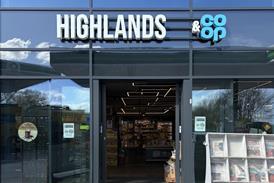
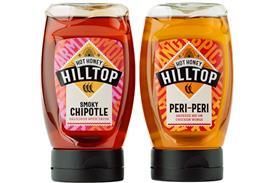
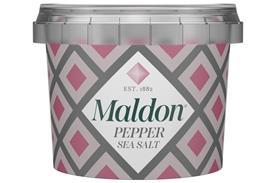
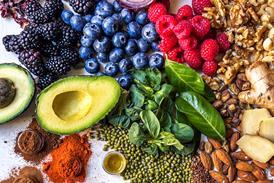
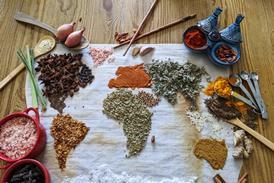





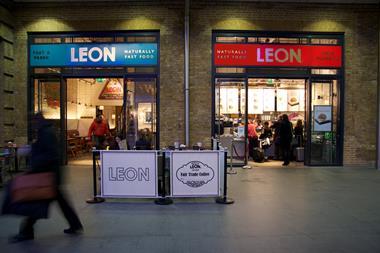


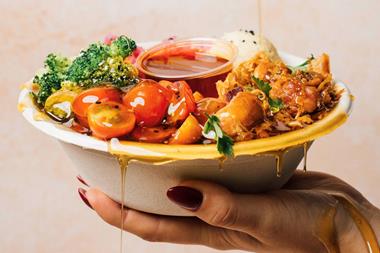
No comments yet